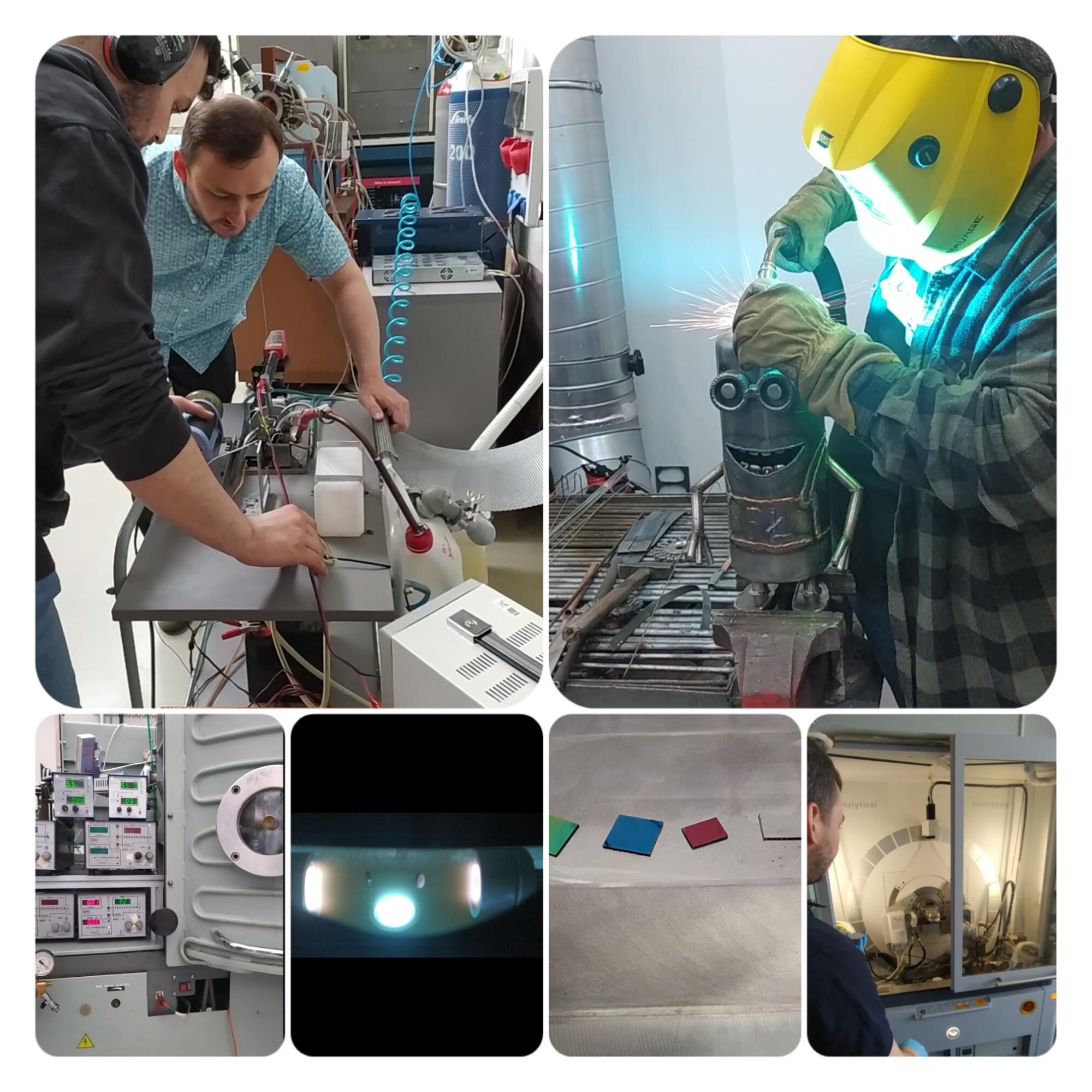Department of Nanomaterials Engineering
conducts research in the following areas:
Plasma techniques (RF PECVD, CVD, PVD, magnetron sputtering, HiPIMS, GIMS, plasma etching processes using CF₄ and SF₆) for surface modification purposes (various types of coatings: DLC, doped DLC, wear- and oxidation-resistant, hard and superhard, TBC, anti-adhesive, anti-corrosive, parylene coatings on textiles, electronics, and organic electronics) and powder modification;
surface activation and preparation prior to coating deposition (gradients, interlayers);
plasma-assisted thermal and chemical treatment in vacuum.
Other research interests include:
MAX phases, 2D materials (graphene, graphene-based structures, MXenes), and self-assembled monolayers (SAMs).
Our team has extensive experience in advanced materials characterization at the micro- and nanoscale using the following techniques:
SEM/EDS, XRD, Raman spectroscopy, SPM, nanoindentation, tribological testing (low and high temperature), nanotribology (LFM, nanowear), thermogravimetry, optical profilometry (confocal, interferometric, FV), thin film adhesion testing, and more.
We also have significant experience in implementing both national and European research projects.
Feel free to contact us to learn more about our expertise and research infrastructure.
Our experience in coatings includes, among others:
-
Hard and superhard coatings (nitrides, carbides, oxides, borides of transition metals);
-
Low-friction, self-lubricating coatings based on carbon nanocomposites or MoS₂ for terrestrial and space applications;
-
Corrosion- and hot-corrosion-resistant coatings (SiCxNy, TiO₂, MeCrAlY, TBC);
-
Antibacterial coatings;
-
Optical coatings;
-
Rhenium-based coatings;
-
Thin films of noble metals;
-
Combinatorial material selection (CHTS) using thin films;
-
Powder metallization for catalysis or metal matrix composite production;
-
Deposition of ferromagnetic materials;
-
Parylene coatings for museum object conservation, medical applications, and organic electronics;
-
Plasma glow discharge surface hardening of titanium alloys – oxidation and nitriding;
-
Heat treatment of metal 3D prints;
-
Surface texturing in plasma;
-
Indirect method for producing hard coatings on tool steels;
-
Coatings for glass processing tools.
Other activities:
-
Design and construction of vacuum equipment for CVD and PVD techniques;
-
Development of plasma sources for CVD and PVD;
-
Modernization of vacuum systems;
-
Design of sample holders;
-
Feed positioning systems in vacuum chambers;
-
Thin film resistivity measurements;
-
Fuel cell and electrolyzer production and catalyst testing;
-
Joining using welding techniques (ACTL, MMA, MIG/MAG, TIG);
-
Thermal cutting (plasma, ACTL).
